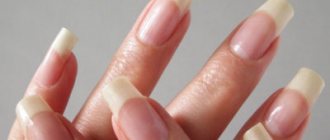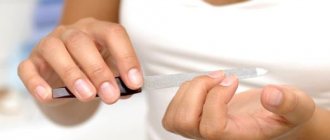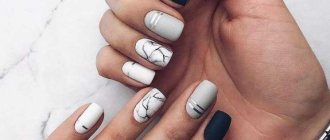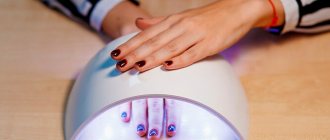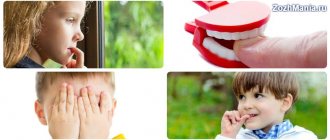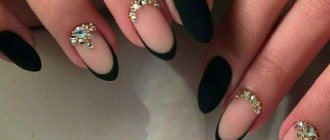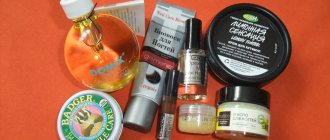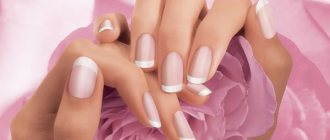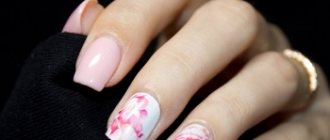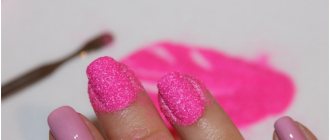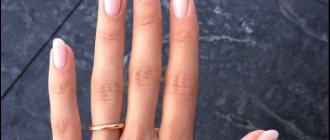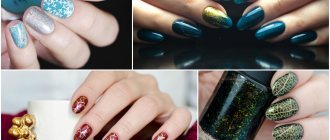What is psoriasis?
Psoriasis is a chronic inflammatory disease of the skin. According to the development mechanism, it belongs to autoimmune pathologies and metabolic disorders. Externally it manifests itself in the form of characteristic formations on the skin, which are called psoriatic plaques.
Features of the rash: peeling, scaly, dry surface, rich pink-red color. Elements of the rash merge with each other, forming large plaques that rise above the skin.
The reason for the formation of plaques is the excessive proliferation of epidermal cells of keratinocytes, the accumulation of cells of the immune system, lymphocytes and macrophages in the area of inflammation. In addition, active angiogenesis or the formation of new capillaries occurs, which causes a red color.
A psoriatic rash appears on the body only during exacerbations of psoriasis, and during remission it is absent or slightly expressed. Causes severe itching and pain. The rash can occur anywhere on the body, but is more likely to appear in areas that are subject to friction or pressure. This is the scalp, elbows, arms, knees, buttocks. The disease causes a person great discomfort from both a physical and moral point of view. After all, such rashes are difficult to hide under clothes or disguise.
Despite the repulsive and frightening appearance of the rash, psoriasis is not dangerous to others. The disease is not infectious and not contagious.
Nail damage due to psoriasis occurs in 60% of people. Moreover, the mechanism for the appearance of changes is the same as on the skin. Psoriatic plaques form under the nails, on the skin of the bed or around the nails on the surface.
What causes?
The main risk factor for the development of psoriasis is hereditary disposition. In 40% of patients, immediate relatives suffer from the same disease.
Other causes of psoriasis of the toenails and fingernails include:
- nervous stress, emotional instability;
- living in a cool, dry climate;
- past infectious diseases;
- bad habits;
- malnutrition;
- frequent mechanical damage to the nail plate.
Nail psoriasis is a chronic disease that cannot yet be cured.
It consists of periods of remissions and exacerbations. Exacerbation attacks are caused by certain medications (lithium drugs, antidepressants, antimalarials, anticonvulsants, antibiotics), dietary errors, alcohol intake, nervous stress, and infections.
The risk of developing the disease does not depend on gender or age. It is not uncommon for a child to develop nail psoriasis, and even a newborn can suffer. In 75% of cases, parents or doctors discover the first signs of pathology in childhood before the age of 5.
Tools and materials: list
How to properly treat your nails at home? First you need to prepare all the tools and materials that may be useful during the manicure process. Stores today offer a huge selection of hand care products. To perform a manicure yourself you may need:
- nail polish remover;
- nail files;
- wooden sticks for pushing back cuticles;
- nail scissors or tweezers;
- cuticle oil;
- softening agent;
- cotton pads;
- steam bath;
- hand skin care cream;
- hand scrub;
- hydrogen peroxide;
- brush with natural bristles;
- nail polish;
- base coat (base);
- varnish fixer (finish);
- waffle towel or cotton napkin.
What does nail psoriasis look like?
Symptoms of the disease are varied. Nail damage characteristic of psoriasis affects the matrix (growth zone), tissues of the nail bed, and lateral ridges. Such changes are called psoriatic nail dystrophy. Depending on the severity and location of the inflammation, it manifests itself in the form of different conditions.
Damage to the nail matrix causes thimble syndrome, leukonychia, plate dystrophy, onychorrhexis, transverse grooves (Bo's lines). If the nail bed is involved in the inflammatory process, this manifests itself in the form of onycholysis, hyperkeratosis, splinter hemorrhages, and spots. Damage to the ridges leads to psoriatic paronychia. Each of these types of dystrophy is observed individually or in combination with others.
Some nail changes are painful and make it difficult to move your fingers freely. Examples of psoriasis of fingernails in the photo (manifestations on the feet look similar):
The dystrophy options are described in more detail below.
Thimble Syndrome
Thimble syndrome is the most characteristic and striking symptom of nail psoriasis. It is this that occurs more often than other manifestations of pathology on the nails. The longer a person is sick and the more severe the form of the disease, the higher the risk that this symptom will appear. Thimble syndrome is depressions scattered across the entire surface of the nail plate. Their diameter ranges from 1 to 1.5 mm. These depressions are arranged in lines, rows or randomly.
The reason for the appearance of depressions is associated with the formation of small psoriatic papules in the matrix area where new plate cells are born. Papules create obstacles to the formation of a smooth nail structure and disrupt the structure of the plate. The top layer of nail cells does not keratinize correctly everywhere; some of the cells subsequently exfoliate, resulting in the formation of depressions.
In addition to nail psoriasis, such changes in the structure of the plate are observed with alopecia, eczema, dermatitis and other pathologies. But with psoriasis they are deeper and quite painful when pressed.
Furrows
With psoriasis, the nail plate is covered with transverse grooves, which are also called lines or furrows of Bo. These are deep transverse grooves that form against the background of psoriatic inflammation in the area of the nail matrix. Inflammation interferes with normal nail growth and disrupts the compactness of the cells of the nail plate. Depending on the width of Bo's lines, it is easy to guess how long the inflammation has been present.
Beau's lines are not characteristic signs of nail psoriasis. They are also observed in other conditions. For example, with injuries, circulatory disorders, infections, malnutrition.
Onycholysis
Onycholysis is the detachment of the plate from the nail bed. It usually occurs gradually, without pain or inflammation. More often, separation of the plate is observed from the free edge or on the sides. The onycholysis zone comes in different shapes: circle, crescent, longitudinal stripes. The main cause of onycholysis is a disruption of the cohesion or adhesion between the cells of the plate and the bed. As a result, a subungual space is formed, into which air bubbles, dust, and particles of the epidermis penetrate. Due to the entry of air, the onycholysis zone appears white, grayish-white or yellow-white.
Nail detachment in psoriasis is provoked by a disruption in the formation of the layers of the plate against the background of inflammation. Onycholysis also occurs in metabolic disorders, diabetes, vitamin deficiency, allergies, and weakened immunity. But the peculiarity of psoriatic onycholysis is the presence of a narrow light pink stripe outlining the detachment zone. Over time, this stripe turns yellow or brown.
Rarely, with psoriasis, the nail peels off not from the side of the free edge, but from the side of the lower ridge or nail growth zone. This is called onychomadesis. Unlike onycholysis, onychomadesis develops quickly and is characterized by a severe course.
Subungual hemorrhages
Subungual hemorrhages in psoriasis resemble splinters or fragments. These are small black, yellowish-brown or brown-black vertical lines. They are formed when the capillaries that permeate the nail bed rupture. Rupture occurs at the slightest injury to the plate due to overflow of small vessels in the area of psoriatic plaques.
Similar vertical lines also form with subungual melanoma and infective endocarditis, so to find out the cause of their appearance, go to the doctor.
Subungual hyperkeratosis
Subungual hyperkeratosis is a thickening, an increase in the size of the hyponychium or the visible part of the nail bed, which grows to the plate from the side of the free edge. Thickening occurs due to the proliferation of hyponychial cells as a protective reaction in response to chronic local inflammation.
With subungual hyperkeratosis, gray-yellow horny masses accumulate under the plate, which compress the soft tissues of the nail bed, causing discomfort and pain.
Subungual hyperkeratosis is often present with fungal nail infections, and it is important to distinguish it from psoriasis.
Psoriatic paronychia
Paronychia is an inflammation of the skin on the nail folds. With psoriasis, in addition to inflammation, there is thickening of the skin and redness of the fingertips. Often there is an accumulation of pus with subsequent discharge from under the nail fold.
Spots on the nail plate
With psoriasis, spots of different shapes, sizes and colors form on the nails. Color: white, yellow, red.
Characteristic signs of the disease include a translucent “oil” or “salmon” stain. It looks like a drop of blood frozen under the plate. This is what a psoriatic plaque formed under the plate looks like.
White spots on the nails are called leukonychia. They come in the form of stripes or small dots. Formed due to air bubbles getting between the plate and the bed. At this point, the nail loses its transparency and the surface becomes white. The reasons for their appearance are numerous, but psoriasis is on this list.
Red spots are formed due to the expansion of capillaries in the nail bed area.
Working with the cuticle
A DIY manicure at home starts with the cuticle. Where to start processing it? In order for dry skin to become more pliable and be removed painlessly, it should be softened, and a bath with warm water will help with this.
SIMPLE HOME MANICURE
To do this, pour water into a small bowl and add sea salt if desired. In this case, you can get a comprehensive procedure that will help soften the cuticle as much as possible and at the same time strengthen the nail plate, soften the skin on your hands, and eliminate irritation. The time for taking such a bath is 10 minutes.
Use a terry cloth to blot your hands and use an orange stick to push back the cuticles.
Remove it using special pliers.
Then rub in cuticle oil or regular rich hand cream.
Today, a lot of different products are sold to make cuticle removal easier. For example, salons actively use a special product to soften the cuticle. It allows you to get rid of the skin without the use of cutting tools, but when working with it you need to be very careful, since if you leave the composition on your nails too long, you can get a burn or cause excessive dryness of the nail plate.
CUTICLE SOFTENERS
| Brand RUNAIL. The remover contains aloe extract. The cuticle softens within 3-5 minutes and is removed with a stick or a special manicure tool. Not suitable for very rough skin. | |
| Brand ORLY. Medium consistency, specific aroma, removes cuticle well. The exposure time is only 20-30 seconds. | |
| Brand INGARDEN. The remover has a liquid consistency, is convenient for home use, and perfectly softens the cuticle. Application time also ranges from 3 to 5 minutes. | |
| Brand Be natural. Acts quickly, maximum time 45 seconds. Very quickly softens the cuticle. It is better to apply in stages, several fingers at a time. Suitable for rough cuticles. | |
| Brand OPI. The product is in the form of a light cream with a pleasant aroma. Exposure time 3-5 minutes. Not suitable for very rough cuticles; it will soften them only slightly. | |
| Brand CND. A good remover that removes cuticles very carefully. But not very suitable for home use due to its large volume. | |
| Brand MASURA. Remover with algae extracts. Well softens and nourishes the cuticle. | |
| Oriflame brand. The remover has a pleasant smell and softens the cuticle well, but the bottle is not very convenient to use. | |
| Eveline brand. Not a very comfortable tube. The product is difficult to distribute accurately. It greatly softens not only the cuticle, but also the nail plate. |
Hardware manicure for beginners
Probably everyone has already heard about hardware manicure. More and more fans of this technology are appearing. Its trick is that it allows you to free it from dead cells without damaging the cuticle. Of course, here you will have to master a special apparatus, which is equipped with various cutters. It will help you forget about wire cutters and other devices. Hardware manicure is performed quickly and painlessly.
HOW TO DO A HARDWARE MANICURE CORRECTLY STEP BY STAGE
It is performed on dry skin. At home, it is better for beginners to work at low speed to prevent accidental damage.
Stages of work:
- If there is old coating, it must be removed. How to do this correctly, see the section: How to remove gel polish.
- Treat the skin with an antiseptic liquid.
- Use a stick to push back the cuticle. Using a cone-shaped nozzle, remove the skin. Hardware manicure for beginners should be performed at medium speeds. Movements should be neat and smooth. The cutter should not be pressed too hard against the skin. To remove the cuticle you need to move from left to right.
- Give your nails the desired shape. The disk attachment is designed for this purpose.
Video tutorial on hardware manicure
European manicure at home
A trim manicure is not the only way to get your hands in order. European manicure, which has a lot of advantageous characteristics, is considered its worthy competitor. Its essence is that the cuticle is treated with a special softening compound, and then pushed back with a stick. After applying the decorative coating, a special oil is applied to the cuticle, which slows down its growth. The beginning of a manicure for beginners is giving the nails the correct and suitable shape. To do this, use a file of medium hardness. After that, the nails are covered with regular varnish and the coating is secured with a special product.
The advantages of European manicure are obvious:
- The risk of infection is reduced.
- Does not cause pain.
- It will be an excellent choice for people with thin, sensitive skin.
EUROPEAN HOME MANICURE
- The first step is to remove the old coating from your nails. Detailed instructions in the section: How to remove gel polish.
- In the second stage, you need to shape your nails using a natural nail file and lightly sand them.
- Apply remover (a special cosmetic product for softening and subsequent removal of the cuticle). The exposure time is different for everyone, from 30 seconds to 10 minutes (on average 3-5 minutes). Read the instructions carefully, because... the recommended time cannot be exceeded. Then you need to remove the remover with a cotton pad or wash it off.
- We push back the cuticle and clean the edges if necessary.
- At the final stage, we roughen the nails using a buff and degrease them using a special de-sticking agent.
It is better to degrease your nails with special lint-free cotton pads for manicure to avoid getting small fluff on the nail, which can subsequently ruin the appearance of the coating.
Nails are prepared for applying gel polish. You will learn about the sequence of stages of a gel polish manicure below in the step-by-step photos.
Video tutorial on how to perform a home European manicure
How to do edged manicure at home?
Despite the popularity of European manicure, many girls still prefer the edged version, thanks to which a manicure with gel polish or other coating looks very impressive.
Performing a trim manicure for beginners in stages is as follows:
If there is an old varnish coating, it must be removed.
- File your nails and give them the desired shape.
- Prepare a bath to soften the cuticle (you can additionally apply remover).
- Then push back the softened cuticle with a stick or metal pusher. You can also clean out the pterygia with a spatula.
- Using nail scissors or nippers, carefully trim the cuticle along the edge and clean the area of the side ridges. After this procedure, the cuticle can be wetted again and pushed back again.
- Apply nourishing oil or cream with massage movements until completely absorbed.
Video tutorial on trimming your own manicure
Differences from other pathologies
Symptoms of nail psoriasis are also observed with other nail problems. But people with psoriasis usually have manifestations of the disease on the skin, so it is enough to carefully examine the body. If psoriatic changes are present only on the nail plate, the diagnosis becomes more difficult. It is important to ask the patient whether his parents had this disease. If necessary, to clarify the diagnosis, the doctor will prescribe a biopsy of the nail bed, examine the skin with a dermatoscope, and take a scraping from the altered part of the plate to identify fungal pathogens.
In the absence of manifestations on the skin, psoriasis is difficult to distinguish from a fungal nail infection (onychomycosis). External symptoms are similar: onycholysis, clouding, thickening, destruction of the nail plate. Fungus or psoriasis on the nails can be determined after a mycological examination of scrapings from the affected part. With onychomycosis, fungi will be detected. In 35% of cases, both diseases are present simultaneously. Inflammation, which occurs in psoriasis, facilitates the penetration and reproduction of pathogenic pathogens. When a mycotic infection occurs, the symptoms of nail psoriasis will intensify.
Psoriasis is often confused with another similar skin disease - eczema, which also affects not only the skin, but also the nails.
How to distinguish nail psoriasis from eczema? Look for skin rashes. With eczema, watery blisters form, the elements of the rash become weeping, and then become covered with crusts. Eczema appears only on sensitive areas of the skin, on the inner flexor surfaces of the knee and elbow joints. With psoriasis, rashes can appear on any part of the body.
How to treat nail psoriasis?
Psoriatic changes make the nails look scary. This causes worries, fears, and complexes, especially in women. I want to hide and not show my hands to anyone, it’s awkward to leave the house, and I constantly feel embarrassed. Those around you immediately believe that it is something contagious and instinctively step aside. Although in fact the disease is not contagious, it is not transmitted from one person to another, even through close contact.
Nail psoriasis causes serious psychosocial and cosmetic problems. Therefore, the main goal of treatment is to improve the appearance of hands. It will take time to notice positive changes. This is due to the slow growth of the nail plate and the cumulative effect of the drugs used.
Medicines include systemic and local agents. For each person, the doctor selects them individually, taking into account the symptoms and severity of the condition. Sometimes you have to try different treatment regimens to achieve results. Reviews on nail psoriasis forums from patients confirm this fact.
In addition to medications, a course of phototherapy or insolation is sometimes prescribed. Impact on the affected areas of the skin and nails helps stop excessive cell division and plaque formation, relieve inflammation and itching.
In case of severe damage, when restoration of the nail plate is impossible, it is removed. Subsequent therapy is aimed at growing a new healthy nail. Vitamins help speed up growth. They are prescribed internally and externally in the form of oil solutions (Aevit) to treat the skin of the finger, nail bed, and growing plate.
Any medications are used only under the supervision of a dermatologist, carefully following the doctor's instructions. Self-medication of psoriasis can aggravate the disease, prolong the course of therapy, and create serious complications.
Systemic drugs
If necessary, systemic medications are prescribed by a dermatologist.
These are the same remedies that are used for psoriatic skin rashes:
- Cyclosporine. Refers to immunosuppressants or drugs that suppress the activity of the immune system. Stops the formation of new psoriatic plaques and reduces the size of existing ones. It is mainly used only for severe forms of psoriasis;
- Methotrexate. Affects metabolism inside cells, blocks the vitamin activity of folic acid. In psoriasis, it exhibits an immunosuppressive effect, suppressing the pathological autoimmune reaction;
- Retinoids. These are synthetic analogs of vitamin A that affect immune cells and normalize the reproduction and development of keratinocytes. Suitable for long-term use;
- Wobenzym. An enzyme preparation that helps relieve the unpleasant symptoms of psoriasis during exacerbation. Relieves inflammation and swelling. It has a general strengthening effect, prevents relapses and further deterioration.
Self-medication with the listed drugs is unacceptable, as there are contraindications and dangerous side effects.
Local remedies
Local remedies for nail psoriasis include:
- Ointments based on medical solid oil (Kartalin, Magnipsor, solid oil ointment). They have an anti-inflammatory, regenerating, exfoliating effect;
- Hormonal ointments with corticosteroids. They are first-line drugs to relieve symptoms. Relieves inflammation, pain, redness. Improves the condition of the nail bed and matrix;
- Creams Calcipotriol, Daivonex. Contains a synthetic analogue of vitamin D. Regulates immune processes in the skin, slows down the accelerated division of cells in the stratum corneum. Particularly effective for subungual hyperkeratosis;
- Ointments with retinoids (Zorak, Tazarotene). Exfoliate inflamed, damaged epidermal cells, smooth the surface of the skin. They help with psoriatic dystrophy affecting the nail bed and matrix, but the therapeutic effect develops slowly;
- Keratolytic varnishes, gels with urea. Exfoliate, smooth the surface of the nail plate, nourish.
Folk remedies
Folk remedies are also used to treat nail psoriasis at home. In agreement with the doctor, they are used as an addition to the main medications.
Baths, compresses, lotions with decoctions of medicinal herbs that have an antiseptic and healing effect help. These include bay leaf, sage, oak bark, chamomile, and celandine.
Manicure at home
Doing a manicure at home is not recommended. But what can you do if, for some reason, girls do not have the opportunity to visit a professional hairdresser? A way out can always be found. You can master a couple of basic rules of manicure and do it at home without any problems, and your nails will be healthy and beautiful.
In this article we will tell you what you need to be able to do and know in order to perform a manicure at home, and at the end of the article you will find excellent video lessons that will clearly show you everything.
Using files for home manicure
To begin with, you should choose good nail files. Never use metal files! You should not use them even if they were sold in a good set. Many experts recommend using files with a glass base (can be cardboard or rubber) and sand or sapphire coating. If your nails are flaky or not strong enough, then you should use a fine-grained file with a buffer zone. In any case, to treat natural nails you do not need to use coarse nail files. They were specially developed for processing artificial materials when correcting or extending nails. And if you decide to treat your nail plates with a metal or coarse file, this will lead to nail separation.
How to properly use a nail file when doing a manicure?
Firstly, you need to remember that the free edge of the nail can only be filed when it is dry. When wet, they can simply separate. Moreover, you should not cut them after soaking them in baths. Move the file in one direction - from the edge to the center. Do not place the file perpendicular to your nails - this can also lead to delamination.
To add a glossy shine, use a special polisher. It has several working surfaces, each of them has its own grain size. Use the smoothest surface possible to polish your nails. Thus, polishing can be done no more than once every three to four weeks.
Preparing and removing cuticles at home
It is highly not recommended to trim cuticles at home using metal tools. Professionals recommend removing them only using the European method (not cutting). Now there are many drugs (gels, liquids, oils) that soften the cuticle and slow down growth. You can give preference to any manufacturer, it is important to buy only in specialized stores.
It is necessary to take care of the cuticle daily. Now UchiDoma will list the main measures that should be followed:
- Exfoliate 1-2 times a day using a soft brush with baby or glycerin soap. This simple procedure will help you prevent the formation of cracks and get rid of dead cells.
- Give a light massage to the cuticles when applying cream to your hands.
- Throughout the day, you should rub oil with vitamins on your cuticles (olive oil is fine) - this prevents the formation of hangnails and softens the skin.
- Do all housework that involves water with rubber gloves.
- Use cream soap to wash your hands.
After a couple of days of these procedures, you can easily remove the cuticle at home with a manicure stick. Apply a special liquid and carefully remove it with a wooden stick.
Removing hangnails during a home manicure
The reasons for the appearance of hangnails may be insufficient knowledge about manicure and poor attitude towards your hands. What can be done to prevent them from appearing is written in the previous paragraph (about cuticle care). The first stage of this problem is solved this way: baths with warm olive oil are carried out every day. But if you are at the stage of painful and bleeding tears in the corners of your nails, then you should start taking urgent measures. Otherwise, it can lead to infection, and hangnails look unsightly and can spoil the impression of even the most excellent manicure. The process of removing them is quite delicate, but you can handle it.
- Steam your hands in a warm bath with baking soda or glycerin and wipe dry with a clean towel.
- To remove burrs, you need special tweezers with triangular tips and beveled edges. Nail scissors are not suitable for this, because there is no way to press them tightly to the skin that is damaged.
- Before starting the process, be sure to disinfect the tweezers with alcohol!
- Carefully cut off the hangnails, do not pull them, so that the abscess does not get worse. Place the tweezers perpendicular to the hangnails and press firmly to the skin.
- After the procedure, fingers should be treated with an antiseptic.
Home manicure. Applying varnish
To get an even and deep color, you need to apply a base underneath the varnish. This will extend the life of the varnish and protect the platinum of the nail from paint pigment getting into it. As a result, when you remove the coating, your nails will be healthy and look natural. When the base is dry, apply varnish.
The technique is simple. The first stroke should be done in the center, and then move from the cuticle to the edge of the nail. Then carefully cover the remaining unpainted areas. If you need to apply a second layer, then do everything the same way. It is necessary to avoid getting varnish on the side rollers and cuticles. If this happens, use a cotton swab dipped in acetone-free liquid to carefully remove it. To make the varnish dry faster, you can apply a drying sealer.
Proper nutrition is the key to healthy nails
All the efforts made can be completely in vain if your nails are unhealthy - uneven surface, cracking, peeling, breaking. These problems most often occur due to poor diet. In order for your nails to be elastic, strong and look healthy, your body needs to drink enough protein, microelements, and vitamins. But do not abuse pharmaceutical drugs - this will only worsen the situation. It is much better if all these substances come from food.
The following vitamins are important: A (fresh greens, tomatoes, carrots, liver), B (bran, cabbage, egg yolk, brewer's yeast, sprouted wheat), H - biotin (sprouted cereals, brewer's yeast, walnuts, eggs, beef liver ), E (nuts, vegetable oils). Microelements: calcium (yogurt, cottage cheese, dairy products), selenium (garlic, lard, sea fish, coconuts, pistachios), silicon (barley, oats).
Home manicure should be made a regular procedure, and you can forget about problems with your nails, and they will become your decoration.
Video lessons
uchidoma.ru
